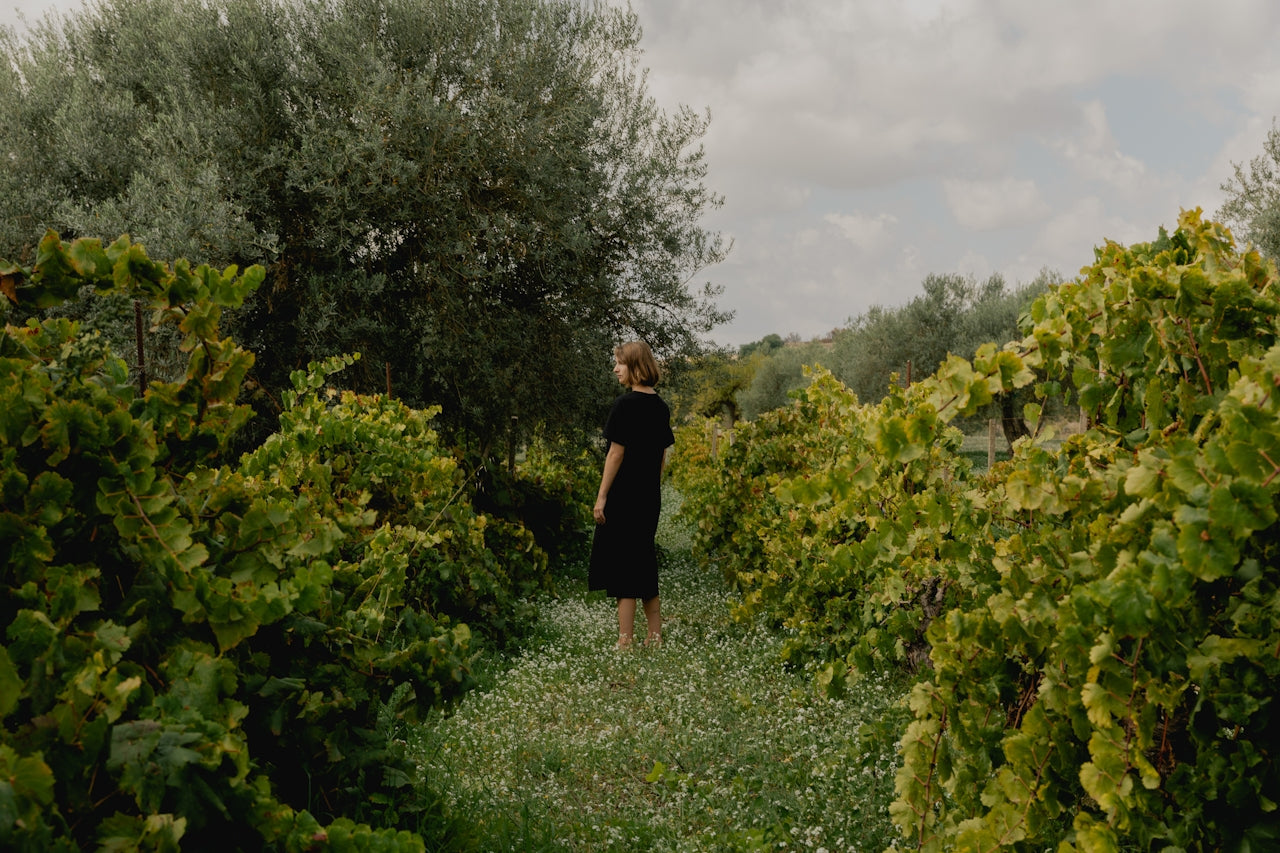
The Colour of the People’s Wine
The colour now associated with leisure was once the colour of the people’s wine. Long before rosé became shorthand for a certain kind of seasonal indulgence, it was simply the natural result of how wine was made.
In the ancient Mediterranean, winemaking was a shared, agricultural act rather than an industrial one. Farmers tended mixed plantings of red and white grapes growing together on the same parcels of land. At harvest, everything was picked and brought in together. Clusters were crushed by foot or with simple wooden presses in broad stone basins, releasing juice that ran pale and cloudy. The grapes weren’t separated by variety or colour; everything went in as it came from the vineyard. The juice rested on the skins only briefly, drawing out a soft blush before being drained into clay amphorae to ferment. Some wines, depending on the grape mix and the length of skin contact, took on a deeper, more amber hue that resembles what we now call orange wine. Others were paler, closer to what we’d think of as light reds or rosé. In truth, these ancient wines didn’t fit neatly into our modern categories; they existed on a continuum shaped by climate, method and materials. Without temperature control, stainless steel or deliberate extended soaking, the result was naturally pale, lightly structured wine that flowed through daily life like bread and oil.
The Greeks made wine this way, and the Romans carried the method across their empire. For centuries, pale wine was not a curiosity or a luxury; it was the everyday expression of grape and place. Deep, concentrated reds were rare and expensive, requiring more careful fermentation and storage. The colour we now associate with leisure was, for generations, the colour of the people’s wine.
This tradition held most clearly in Provence, on France’s southern coast, where pale, dry wines were made deliberately for refreshment in the heat. Winemakers often reserved the first light pressing of the grapes, prized for its delicacy and clarity, and fermented it to retain brightness. It was the wine of the table, poured beside grilled fish, vegetables, olives and bread. It wasn’t defined by category or fashion; it was simply what the landscape and the methods produced.
Modernity changed everything. As technology advanced and global markets grew, darker reds and sharper whites became the benchmarks. Rosé became a product rather than a practice. Colour turned into marketing shorthand. Producers around the world imitated the Provençal look, often bleeding off juice from red wine fermentations as a by-product rather than crafting rosé with intent. What had once been a centuries-old expression of place was briefly flattened into a lifestyle image.
The grown-up version of rosé is something else entirely. It is made intentionally, from fruit chosen and harvested for the style, not siphoned from another. It has shape and texture, sometimes a savoury edge or a mineral spine. It belongs at the table, where it has always been.
As the first bottles of the season arrive, it’s worth remembering that rosé is not a new idea, nor a passing trend. The colour now associated with leisure was once the colour of the people’s wine.


